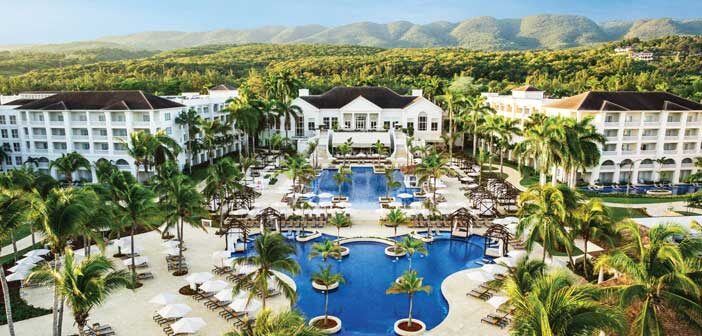Once travel began its return after the COVID-19 pandemic hit its peak, guests often sought out leisure destinations that allowed them to stay in one location, minimizing their exposure.
This made all-inclusive resorts—with restaurants and activities all on-site and included in the stay—a popular choice. In fact, the category still remains one. A recent survey commissioned by Wyndham Hotels & Resorts, and conducted by OnePoll, shows that 75% of travelers believe the best way to travel is to book an all-inclusive trip, and 77% believe that an all-inclusive vacation is the least stressful way to travel.
Hotel companies including Wyndham and several other major names have shown major interest in the space, launching brands and increasing their presence.
But, with a potential recession looming, will the all-inclusive space remain popular with guests?
David Camhi, a South Florida-based partner at law firm Greenspoon Marder, with extensive experience in hospitality in Latin America and the Caribbean, including serving as general counsel for Playa Hotels & Resorts, believes it will.
He points to the “significant boom” the all-inclusive sector saw following the 2008 recession as consumers looked for cheaper ways to take quality vacations.
“What we saw in 2008, which I think we are going to see this time around, is that we’re coming from a period of economic boom; people have a lot of money,” he said. “There’s a lot of liquidity in the market. There’s a lot of demand for luxury.”
Consumers became accustomed to that luxury, he said. “Then, when things take a turn for the worse—when consumers get concerned or they may have a loss of revenue or disposable income—they will still want to be able to enjoy what they were used to,” said Camhi. “That’s where all-inclusive provides an alternative because if you go to a luxury property [that is not all-inclusive], you pay for the room, but you still need to eat and drink and enjoy the services, but at the end of the stay, you are going to get the sticker shock.”
As opposed to the European Plan (EP) hotels—where the rate covers only the room—the all-inclusive resorts provide the value that guests are looking for. “With all-inclusive, people start to be more conscious about the value it provides,” he said.
The Great Recession of 2008 started that interest in the sector for U.S. leisure travelers. It also caught the attention of U.S. hotel companies for a sector that has usually been the domain of companies based in Europe and the Caribbean. “Mainstream U.S. consumers…suddenly wanted to go to these all-inclusive resorts, but they wanted them to be these U.S. brands,” said Camhi. “Some brands—like AMResorts from Apple Leisure Group—that were U.S.-based started to sell to these U.S. consumers because they didn’t have a lot of recognition [with the other brands].”
Since then, he said, larger U.S. brands have increased their presence in the space, including Marriott, Hilton, Wyndham and Hyatt, which purchased Apple Leisure Group in 2021. “U.S. consumers are going to be flooding these resorts,” he said. “We saw it after COVID. These resorts were doing great, but I think the recession is going to be another extra bump in that phenomenon.”
Camhi said that what has especially changed for all-inclusive resorts in recent years is the increased focus on better quality food and beverage offerings. “The test for all-inclusive is the ability to deliver the same value that an EP hotel can, but at a fixed price,” he said.
While consumer demand has certainly been an attraction for the brands to increase their presence in the all-inclusive space, another factor is that the “brands have gone everywhere else they can go,” according to Camhi. “They have gone into vacation homes and even hostels. There is nowhere else to go.”
The all-inclusive resorts also offer another option for brands to allow their loyalty members to spend the points they have accrued from various stays. “[The hotel companies] carry on those on their books as liabilities,” he said. “They want consumers to spend their points…The consumers want to be able to go to a resort with their families, and the big brands don’t have a large number of resorts.”



